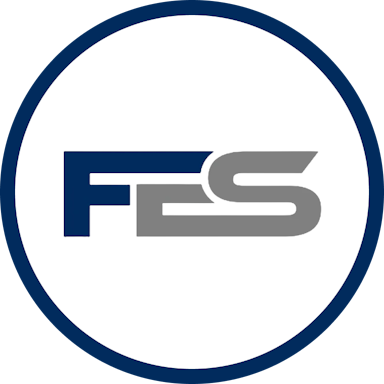Webinar: Student Loan Forgiveness Exposed: The Full Truth starts on May 28, 2024 at 18:00
in 12 days 4 minutes 48 seconds

How to get student loan forgiveness?
In an era where education is both necessary and a significant financial commitment, student loan forgiveness emerges as a hope for many burdened by educational debt. "The Ultimate Guide to Student Loan Forgiveness: Navigating Your Options" is designed to illuminate the path for borrowers seeking relief from the weight of student loans. With the landscape of loan forgiveness programs constantly evolving, understanding your options has never been more critical. This guide aims to demystify the process, providing clear, actionable information to help you identify and seize opportunities for loan forgiveness.
From federal to state-sponsored programs, the avenues for forgiveness are as diverse as the borrowers themselves. Whether you're a public servant, a teacher, or someone struggling with a substantial debt-to-income ratio, programs are tailored to offer relief. However, navigating the maze of eligibility requirements, application processes, and potential pitfalls can be daunting. This guide provides a comprehensive overview, equipping you with the knowledge to make informed decisions about your financial future. By understanding the nuances of each program and strategizing effectively, you can take confident steps toward freeing yourself from the shackles of student debt.
Understanding Student Loan Forgiveness
Student loan forgiveness represents a critical lifeline for borrowers submerged in educational debt, offering a path to financial freedom that might otherwise seem out of reach. At its core, student loan forgiveness is a process whereby borrowers are no longer required to pay back some or all of their federal student loan debt. This might occur under various circumstances, each with its own criteria and implications for borrowers.
Types of Loans That Qualify
Primarily, forgiveness programs are available for federal student loans. These include Direct Loans (Subsidized and Unsubsidized), Direct PLUS Loans, and Direct Consolidation Loans. On the other hand, private loans are not typically eligible for federal forgiveness programs, though some private lenders may offer relief options under specific conditions.
Basic Eligibility Requirements
Eligibility for forgiveness is contingent upon a myriad of factors, often specific to the forgiveness program itself. Generally, these criteria may include:
Type of Employment
: Many programs require borrowers to work in specific sectors, such as public service or education, for a specified period.
Repayment Plan
: Enrollment in an income-driven repayment plan is often a prerequisite, particularly for programs like Public Service Loan Forgiveness (PSLF).
Number of Payments
: Programs usually mandate a minimum number of qualifying payments, typically made while the borrower works in an eligible job.
Loan Status
: Loans must be in good standing, with borrowers often required to make consistent, on-time payments to qualify.
Understanding these foundational elements is crucial for borrowers considering loan forgiveness as a potential avenue for debt relief. The journey to forgiveness is punctuated by specific milestones and adherence to program-specific guidelines, underscoring the importance of a thorough and informed approach to managing student loan debt.
Federal Student Loan Forgiveness Programs
Navigating the landscape of federal student loan forgiveness programs can be both promising and perplexing. These programs are designed with specific public interests in mind, aiming to alleviate the financial burdens of those who dedicate their careers to serving the community or engaging in other valuable public service roles. Here, we delve into the most notable federal forgiveness programs, their eligibility criteria, and the application process.
Public Service Loan Forgiveness (PSLF)
The PSLF program is a beacon for those employed in public service, offering forgiveness after 120 qualifying payments under a qualifying repayment plan while working full-time for a qualifying employer, such as government organizations or non-profit entities. The key to maximizing PSLF benefits is precise documentation and adherence to stringent eligibility requirements.
Teacher Loan Forgiveness
Educators in low-income schools or educational service agencies might qualify for the Teacher Loan Forgiveness Program, which can forgive up to $17,500 of Direct or FFEL Program loans. To be eligible, teachers must serve full-time for five consecutive academic years, among other requirements, underscoring the program's commitment to supporting educators in crucial roles.
Income-Driven Repayment (IDR) Plan Forgiveness
For borrowers on IDR plans, forgiveness becomes an option after 20 to 25 years of qualifying payments, depending on the specific plan. These plans include the Income-Based Repayment (IBR), Pay As You Earn (PAYE), Revised Pay As You Earn (REPAYE), and Income-Contingent Repayment (ICR) plans, each tailored to accommodate different borrower circumstances.
Military Service Forgiveness
Members of the U.S. Armed Forces may find additional forgiveness options through military-specific programs, highlighting the nation's gratitude for their service. These programs often offer unique benefits and forgiveness opportunities beyond civilian programs.
Application Tips and Considerations
Applying for federal loan forgiveness requires meticulous attention to detail. It's crucial to submit all necessary documentation accurately and to stay informed about any changes to program policies. Borrowers should also regularly consult with their loan servicer to ensure they're on the most effective path toward forgiveness.
By understanding the intricacies of these programs and strategizing accordingly, eligible borrowers can navigate their way toward reducing or eliminating their student loan debt, marking significant steps toward financial liberation.
State-Sponsored Forgiveness Opportunities
While federal student loan forgiveness programs often capture the spotlight, numerous state-sponsored opportunities can significantly relieve borrowers residing in or serving specific communities. These programs typically cater to professions in high demand within the state, such as healthcare, education, and legal services, reflecting a targeted approach to addressing local workforce needs and the financial wellbeing of state residents.
Navigating State-Specific Programs
Each state's forgiveness programs have unique eligibility criteria, application processes, and benefits. For instance, some states offer loan repayment assistance to healthcare professionals in underserved areas, while others may support legal professionals who choose to work in public interest law.
Understanding Eligibility and Benefits
Eligibility for state-sponsored forgiveness programs can depend on various factors, including profession, employment location, and commitment duration. Benefits can range from partial loan repayment to complete forgiveness, often contingent upon the borrower fulfilling specified service obligations.
Application Insights
Applying for state-sponsored loan forgiveness requires a thorough understanding of the program's requirements and deadlines. Prospective applicants should research their state's education or workforce development websites for current information and consider contacting program representatives for guidance.
Maximizing Forgiveness Opportunities
To maximize the benefits of state-sponsored forgiveness opportunities, borrowers should consider their career goals and potential service commitments in alignment with available programs. Strategic planning can enhance one's eligibility and the overall impact of loan forgiveness on reducing educational debt.
By exploring state-sponsored forgiveness opportunities with federal programs, borrowers can create a comprehensive strategy for managing and potentially eliminating their student loan debt, paving the way for greater financial freedom and career fulfillment.
State-Sponsored Forgiveness Opportunities
In addition to federal programs, numerous states offer loan forgiveness opportunities tailored to meet local needs and employment shortages. These programs often focus on professions critical to the state's wellbeing, such as healthcare, education, and legal aid.
Highlighting Diverse State Programs
Each state's forgiveness programs come with unique eligibility criteria and benefits. For example, healthcare professionals might find opportunities in rural or underserved areas, while legal professionals could be rewarded for serving in public interest roles.
Understanding Eligibility and Application
Eligibility for state-sponsored forgiveness often hinges on specific employment or residency requirements. It is essential to research and understand the nuances of your state's offerings and how they align with your career path.
Navigating the Application Process
The application process can vary significantly from one state to another. Detailed employment history and residency documentation and a clear understanding of program timelines are crucial for a successful application.
Maximizing Your Opportunities
To fully leverage these opportunities, consider the long-term implications of your career choices and geographical locations. Engaging with state education departments or professional associations can provide valuable insights and guidance.
By exploring state-sponsored forgiveness programs, borrowers can uncover additional paths to alleviate student loan debt, emphasizing the importance of a strategic approach to loan forgiveness.
Income-Driven Repayment Plans
For many borrowers, income-driven repayment (IDR) plans offer a viable route to loan forgiveness, adjusting monthly payments according to income and family size and ultimately forgiving any remaining debt after a set period.
Overview of IDR Plans
IDR plans include the Income-Based Repayment (IBR), Pay As You Earn (PAYE), Revised Pay As You Earn (REPAYE), and Income-Contingent Repayment (ICR) plans. Each plan has specific eligibility criteria, payment calculations, and forgiveness timelines, typically ranging from 20 to 25 years of qualifying payments.
Eligibility and Enrollment
Eligibility for IDR plans generally requires having a federal student loan and demonstrating a significant balance relative to your income. Enrollment can be initiated through your loan servicer, often requiring annual income verification.
Navigating Forgiveness
The path to forgiveness under IDR plans is a long-term commitment, with forgiveness occurring after 20 to 25 years of qualifying payments, depending on the plan. It's crucial to remain in good standing, with regular income and family size recertification.
Considerations
While IDR plans can lead to eventual forgiveness, it's essential to consider potential tax implications on forgiven amounts and the total amount paid over the life of the loan, which may exceed the original balance due to accrued interest.
By carefully selecting and managing an IDR plan, borrowers can align their monthly loan payments with their financial reality, steadily working towards forgiveness.
Charting a Successful Path Through Loan Forgiveness Terrain
Embarking on the journey towards student loan forgiveness is akin to navigating a complex labyrinth filled with potential missteps yet brimming with opportunities for liberation from debt. To emerge victorious, arm yourself with knowledge and a strategic approach.
Steer Clear of Common Missteps
Vigilance is critical in sidestepping the pitfalls that can derail your forgiveness journey. Common oversights include neglecting to submit annual income recertification for IDR plans or misunderstanding the specific requirements of forgiveness programs. Ensuring accuracy in paperwork and maintaining open communication with your loan servicer can avert these setbacks.
Embrace Strategic Decision-Making
Maximizing your success in achieving loan forgiveness demands a blend of foresight and adaptability. This involves choosing the right repayment plan, staying abreast of legislative changes affecting loan forgiveness, and aligning your employment choices with program eligibility criteria.
Stay Informed and Prepared
The terrain of student loan forgiveness is ever-evolving, with new policies and programs emerging. Staying informed through reputable sources and seeking guidance from financial advisors can illuminate your path.
Leverage Support Networks
Engaging with borrower communities and advocacy groups can provide support and insights, enhancing your navigation through forgiveness.
By charting your course with care and determination, you can navigate the complexities of student loan forgiveness, turning the daunting prospect of debt into a journey toward financial freedom.
Explore More Financial Insights
Browse our handpicked articles for fresh insights and strategies in finance. Your next financial breakthrough could be just a click away with FES Inc.

8359 Beacon Blvd #315 Fort Myers, FL 33907
Assisting with Student Loan Document Preparation Financial Enhancement Services (FES) is dedicated to professional document preparation, and we do not negotiate, adjust, or settle debts. Every federal student borrower has the opportunity and is encouraged to apply for federal repayment or forgiveness programs directly through the US Department of Education at no cost. FES is not a lender or legal advice service. For legal or financial advice, please consult with a professional attorney or financial advisor. Each revision maintains the original message while improving clarity and conciseness, ensuring that the information is easily digestible and accessible for readers.


